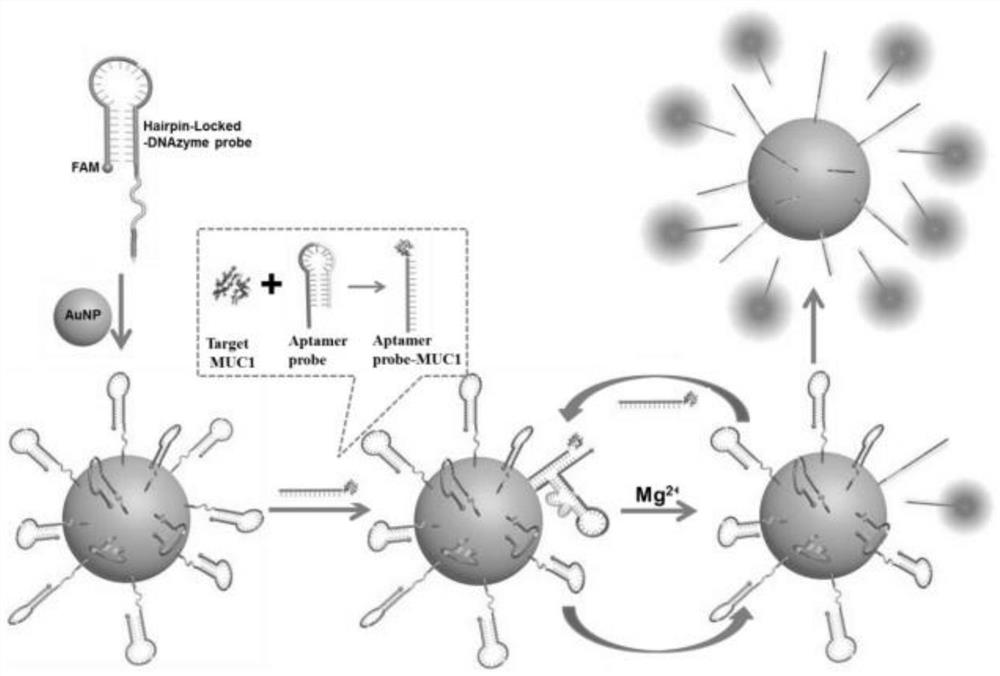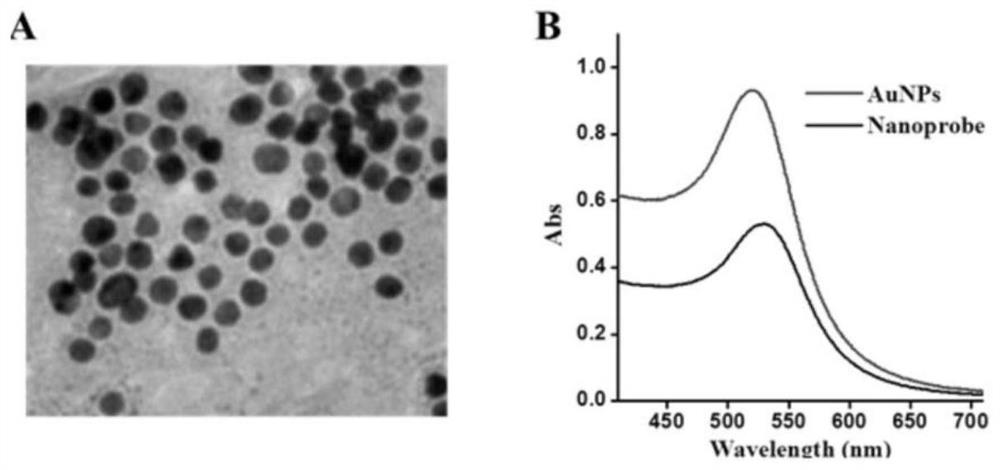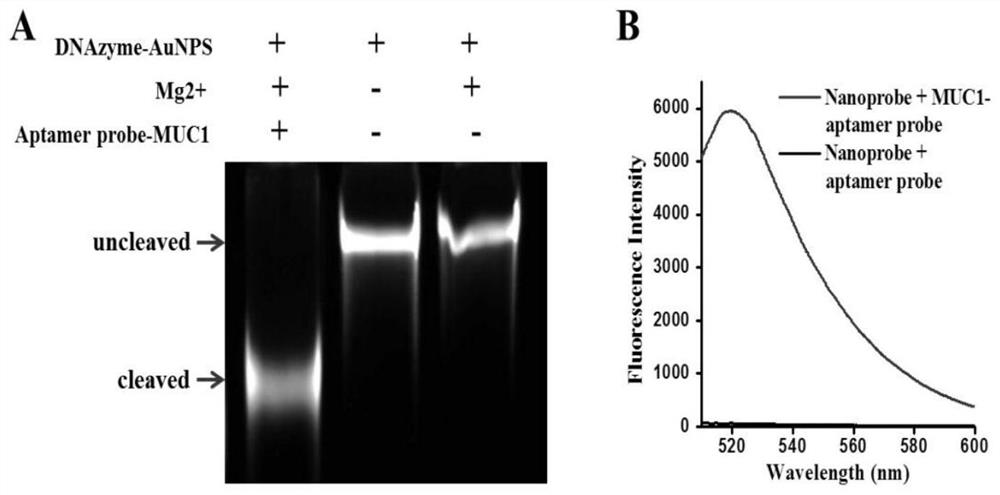Gold nanoparticle sensor based on pin locking deoxyribozyme probe and application of gold nanoparticle sensor in detecting MUC1
A deoxyribozyme probe and gold nanoparticle technology, applied in the field of biological analysis, can solve problems such as unsatisfactory sensitivity, and achieve the effects of improving sensitivity, simplifying the operation process, and good reproducibility
- Summary
- Abstract
- Description
- Claims
- Application Information
AI Technical Summary
Problems solved by technology
Method used
Image
Examples
Embodiment approach
[0027] A typical embodiment of the present invention provides a gold nanoparticle sensor based on a hairpin-locked DNAzyme probe, including a MUC1 aptamer probe, a hairpin-locked DNAzyme probe and gold nanoparticles;
[0028] The MUC1 aptamer probe includes an aptamer DNA sequence and a hairpin DNA sequence connected in sequence, and the aptamer DNA sequence and the hairpin DNA sequence form a hairpin structure, and the MUC1 aptamer probe can recognize MUC1 and Release the aptamer DNA sequence;
[0029] The hairpin-locked DNAzyme probe is a single-stranded DNA sequence, and the hairpin-locked DNAzyme probe includes a first connection sequence, a first binding sequence, a substrate sequence, and a second connection sequence from the 5' end to the 3' sequence, deoxyribozyme sequence and the second binding sequence, the first connecting sequence and the second connecting sequence can make the hairpin locking deoxyribozyme probe form a hairpin structure after the first connecting ...
Embodiment 1
[0050] Preparation of hairpin-locked DNAzyme-modified AuNPs: 1 mL of AuNPs solution (5.7×10 12 Particles / mL) was added 6nmol hairpin-locked DNAzyme probe (FAM-CAAAAAAGC ACA CCG GCT rAGT CTT TTT TTT TGATCCGAG CCG GAC GAA GCC CCA TAG GT-SH, the sequence is shown in SEQ ID NO.1), at room temperature Incubate for 16 h in the presence of 10 mM phosphate (NaH 2 PO 4 / Na 2 HPO 4 ) and 0.1M NaCl in PBS buffer (pH 7.0) at room temperature for 36 hours. Then, the mixture of AuNPs and DNAzyme was centrifuged three times at high speed (13000rpm, 30min) to remove the hairpin-locked DNAzyme probes not assembled on the surface of AuNPs, and the obtained precipitate was resuspended in 250 μL of PBS buffer, and finally stored at 4°C for use. In the hairpin-locked DNAzyme probe-AuNPs solution, the concentration of the hairpin-locked DNAzyme probe was about 18 μM.
[0051] Mg 2+ Dependent hairpin-locked DNAzyme probe self-cleavage cycle signal amplification: Synthetic DNA oligonucleotide s...
PUM
| Property | Measurement | Unit |
|---|---|---|
| diameter | aaaaa | aaaaa |
Abstract
Description
Claims
Application Information
 Login to View More
Login to View More - R&D
- Intellectual Property
- Life Sciences
- Materials
- Tech Scout
- Unparalleled Data Quality
- Higher Quality Content
- 60% Fewer Hallucinations
Browse by: Latest US Patents, China's latest patents, Technical Efficacy Thesaurus, Application Domain, Technology Topic, Popular Technical Reports.
© 2025 PatSnap. All rights reserved.Legal|Privacy policy|Modern Slavery Act Transparency Statement|Sitemap|About US| Contact US: help@patsnap.com



